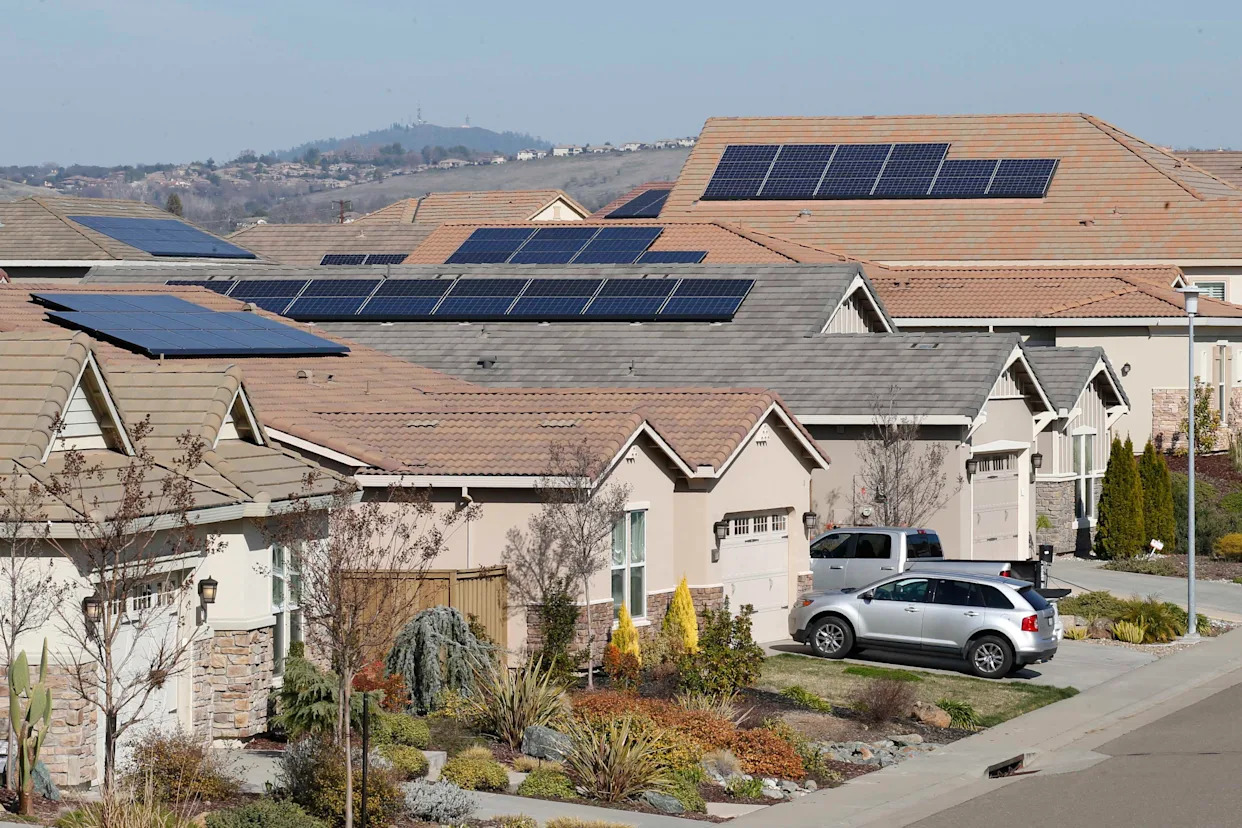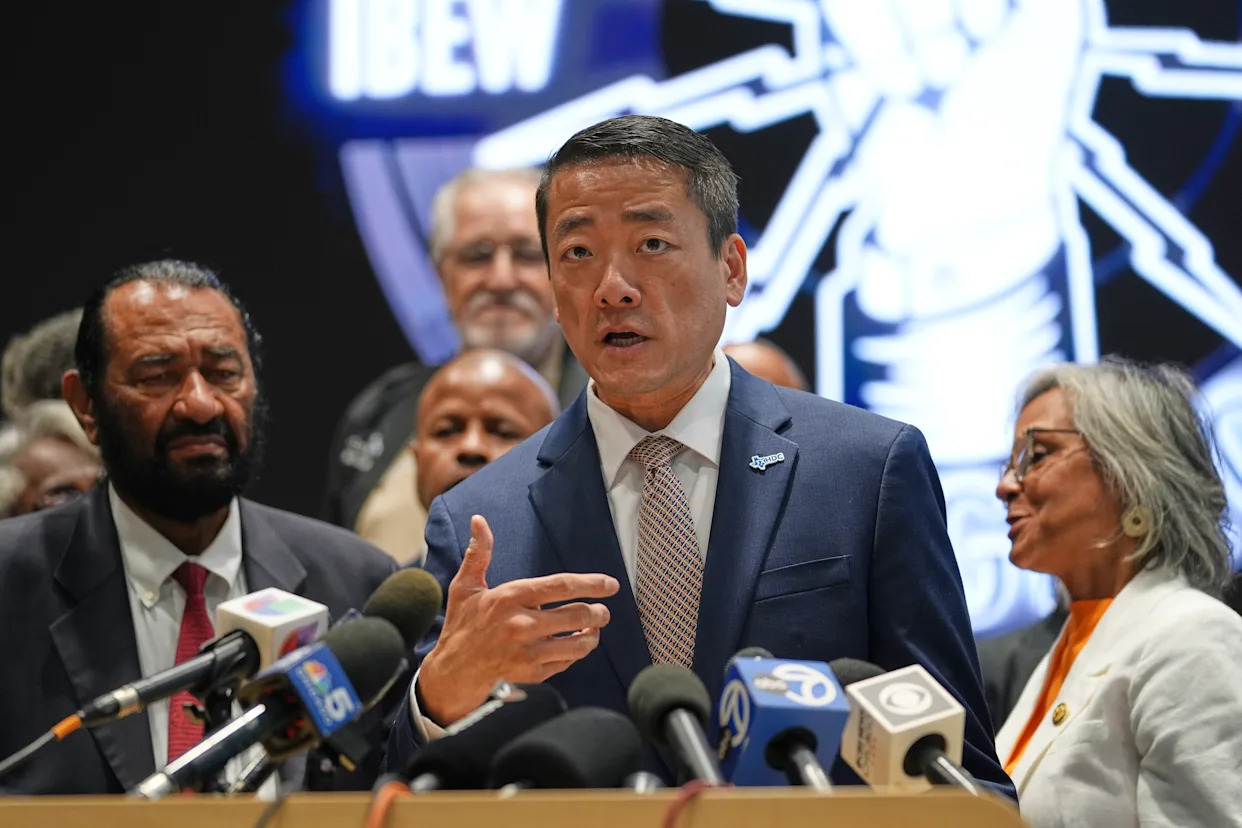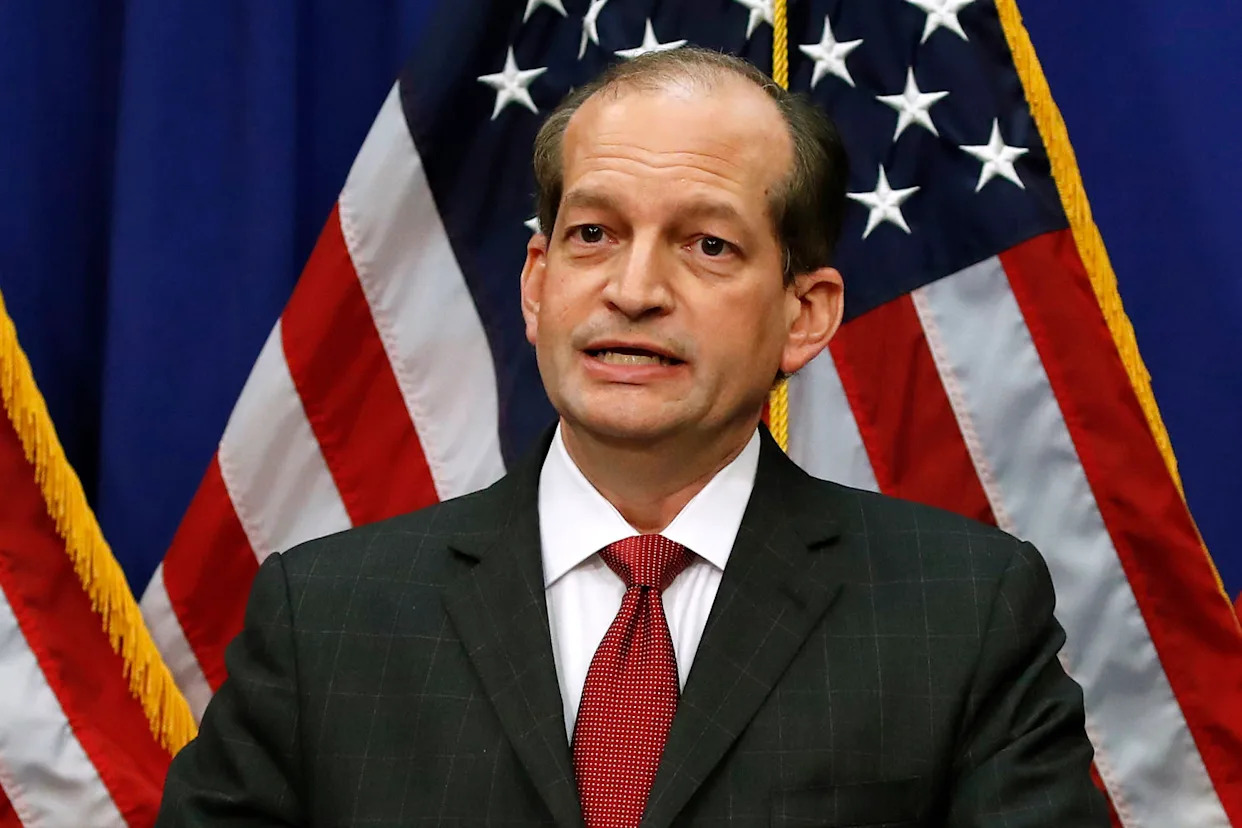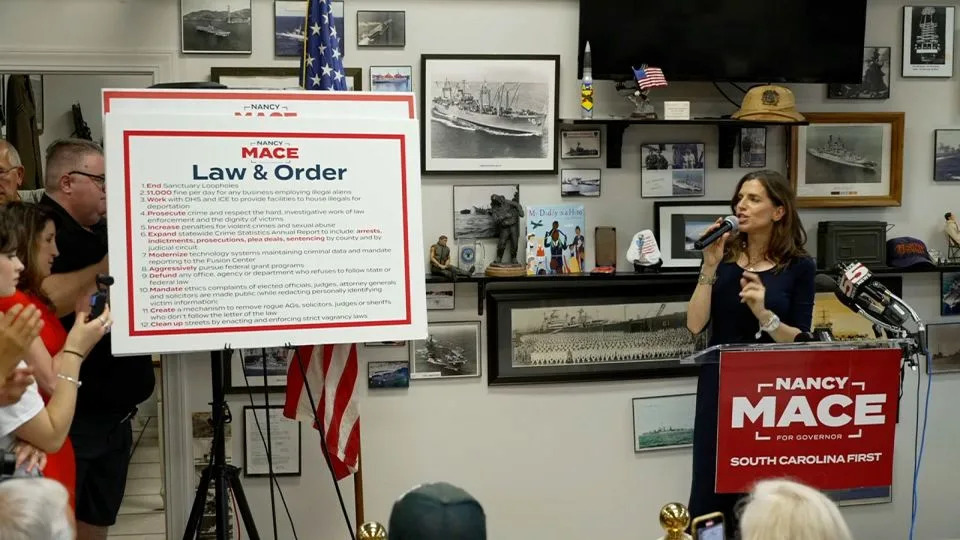
The Trump administration wants to cancel solar programs that let everyday people tap into nearby panels. In California, the technology never even got off the ground.
Almost none of the $250 million that California received from the Inflation Reduction Act’s Solar for All program, which the Trump administration is making plans to terminate as soon as this week, has made it out the door yet.
Solar companies fear they’re on the cusp of losing their best shot at setting up a thriving program in the state for so-called community solar. The dream is to give renters and electricity customers who can’t afford to put panels on their rooftops the chance to draw from nearby mid-sized solar installations. But it hasn’t gone far in California.
“It’s really tragic,” said Joe Henri, senior vice president of policy at community solar developer Dimension Energy. “California’s very elaborate plans are really in jeopardy.”
Advocates like Henri aren’t just blaming the feds, though. Rather, they’re placing a big share of the responsibility at the feet of the California Public Utilities Commission. The EPA announced in April 2024 that it was giving the state a $250 million award. To date, the CPUC, which is responsible for the grant, has distributed next to nothing.
The agency set up a tariff structure for community solar programs in May 2024, and said it would use the Solar for All funding to augment the payments, which advocates said would be too stingy to incentivize projects. But that wasn’t the end. In that decision, the agency asked utilities and community choice aggregators to file a slew of additional advisory paperwork.
The back and forth between the CPUC and interest groups continued on from there. In April 2025, a year after the original EPA award announcement, Administrative Law Judge Valerie Kao put out a notice asking interest groups for more feedback, including how to prudently spend the Solar for All funding before its use-it-or-lose-it deadline of April 2029.
State agencies remain in an “administrative and planning phase,” according to the CPUC website.
“The PUC’s slow-walking of this process has likely squandered $250 million in federal support,” said Matthew Freedman, a staff attorney with The Utility Reform Network. “As of today, we have no program, no development, federal tax credits that are about to sunset, and now an announcement that Solar for All funding is going to be pulled by the Trump administration."
With no official EPA announcement on the Solar for All funding out yet, the CPUC is taking a diplomatic stance.
“The CPUC is actively implementing Solar for All under a stakeholder-driven, EPA-approved workplan,” said agency spokesperson Terrie Prosper.
California has about 217 megawatts of capacity of community solar installed or in the pipeline — far less than leading states like Florida (3,873 MW) or New York (2,110 MW). And while other states also haven’t spent all their Solar for All awards, some are much further along than California. Illinois, for example, has spent $11 million of its $156 million, according to U.S. spending data analyzed by the firm Atlas Public Policy. California has spent $100,641, according to Atlas’ figures.
“California, rather than being a leader in this clean energy aspect, has been a laggard,” said Derek Chernow, western regional director of the Coalition for Community Solar Access, a group of solar developers.
California officials have defended the state against other federal provocations on renewable energy, including by suing over lost EV charging funding, proposing a plan to replace lost EV tax credits with state dollars, and weighing fast-tracked permits for renewable energy projects cut off from federal incentives.
It’s unclear whether the state wants to go to bat for community solar. Asked whether California would sue once the Trump administration terminates the grants, a spokesperson for Attorney General Rob Bonta said the office does not comment on legal strategy.
But the episode illustrates how California’s window of opportunity is narrowing to get renewable energy projects reliant on federal funding off the ground before the Trump administration quashes them.
A bill sponsored by the community solar industry that would have had CPUC redo the tariff and speed up the program failed in the Assembly Appropriations Committee in May. Assemblymember Chris Ward, the author of AB 1260, said he hopes to bring it back next year.
“I’ve always said that a successful program shouldn’t rely on one-time federal funding to survive,” Ward said in a statement.
Like this content? Consider signing up for POLITICO’s California Climate newsletter.








Comments